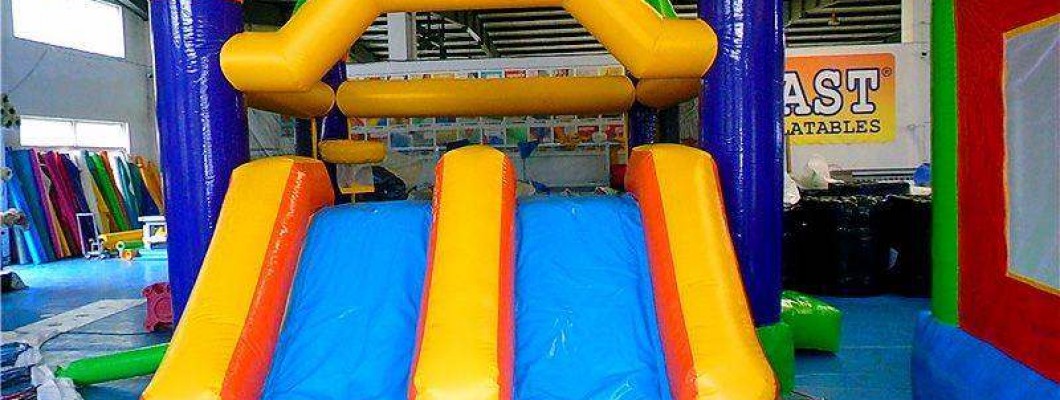
Bounce houses come in two primary categories: commercial and residential. While both types offer fun and entertainment, they are designed for different purposes and vary significantly in terms of construction, durability, and cost. Understanding the differences between commercial and residential bounce houses can help you make the right choice for your needs.
1. Construction and Materials
The most significant difference between commercial and residential bounce houses lies in the construction materials. Commercial bounce houses are made from heavy-duty, industrial-grade materials such as PVC vinyl or oxford cloth, which are designed to withstand frequent use and harsh conditions. These materials are thicker, more durable, and resistant to wear and tear.
On the other hand, residential bounce houses are typically made from lighter materials like nylon or polyester. While these materials are still durable, they are not intended for the same level of usage as commercial bounce houses. Residential bounce houses are designed for occasional use in a home setting and may not hold up as well under heavy or frequent use.
2. Durability and Lifespan
Because of the difference in materials, commercial bounce houses are significantly more durable than their residential counterparts. They are built to endure continuous use, making them ideal for rental businesses, event companies, or other commercial settings. With proper maintenance, a commercial bounce house can last for many years, even with regular use.
Residential bounce houses, while durable for home use, have a shorter lifespan. They are best suited for occasional use, such as birthday parties or family gatherings. Overuse or improper maintenance can lead to quicker wear and tear, reducing their lifespan.
3. Size and Weight
Commercial bounce houses are generally larger and heavier than residential models. They are designed to accommodate more users at once and often feature more complex designs, such as slides, obstacle courses, and multiple bounce areas. The increased size and weight make them more challenging to set up, transport, and store.
In contrast, residential bounce houses are smaller and lighter, making them easier to handle. They can typically be set up by one or two people and are more convenient for home use. However, their smaller size also means they can accommodate fewer children at a time.
4. Cost
One of the most apparent differences between commercial and residential bounce houses is the cost. Commercial bounce houses are more expensive due to their higher-quality materials, larger size, and increased durability. They are an investment for businesses that require long-lasting, reliable equipment.
Residential bounce houses are more affordable, making them accessible to families who want a fun addition to their backyard without breaking the bank. However, the lower cost comes with reduced durability and a shorter lifespan, which is an important consideration if you expect frequent use.
5. Intended Use
Commercial bounce houses are designed for frequent use in a business setting. They can handle the wear and tear of multiple events, large crowds, and diverse environments. These bounce houses are often used by rental companies, amusement parks, and at large public events.
Residential bounce houses are intended for occasional use in a private setting, such as a family gathering or a child's birthday party. They are not designed for the heavy usage seen in commercial settings and may not hold up as well under such conditions.
Conclusion
When deciding between a commercial and residential bounce house, it's essential to consider your needs and how you plan to use the bounce house. If you need a durable, long-lasting inflatable for frequent use or commercial purposes, a commercial bounce house is the better choice. However, if you're looking for something affordable and easy to use for occasional family fun, a residential bounce house may be more suitable. Understanding these differences will help you make an informed decision that meets your needs and provides years of enjoyment.
